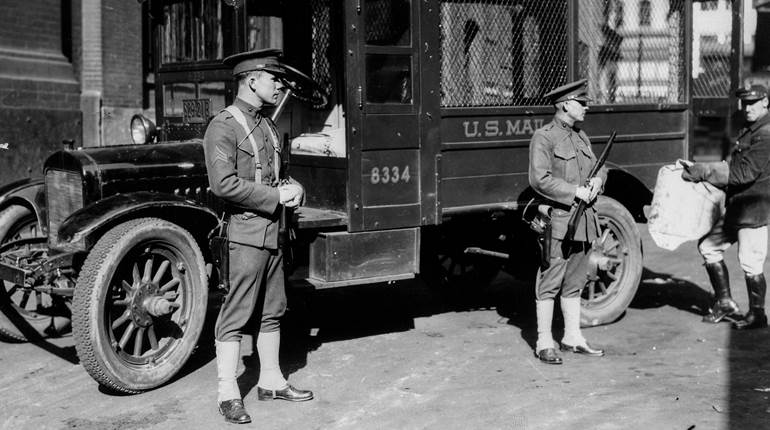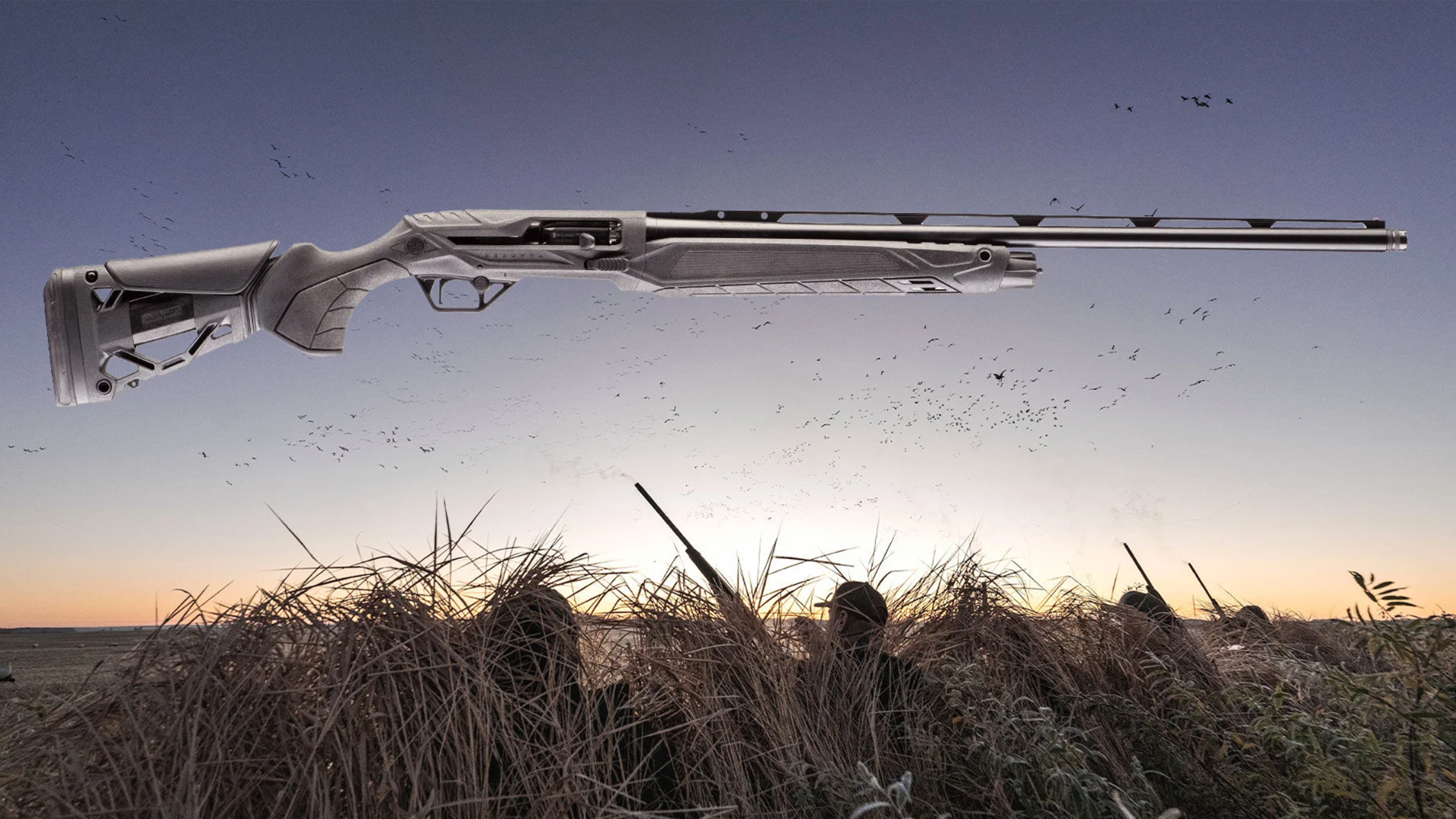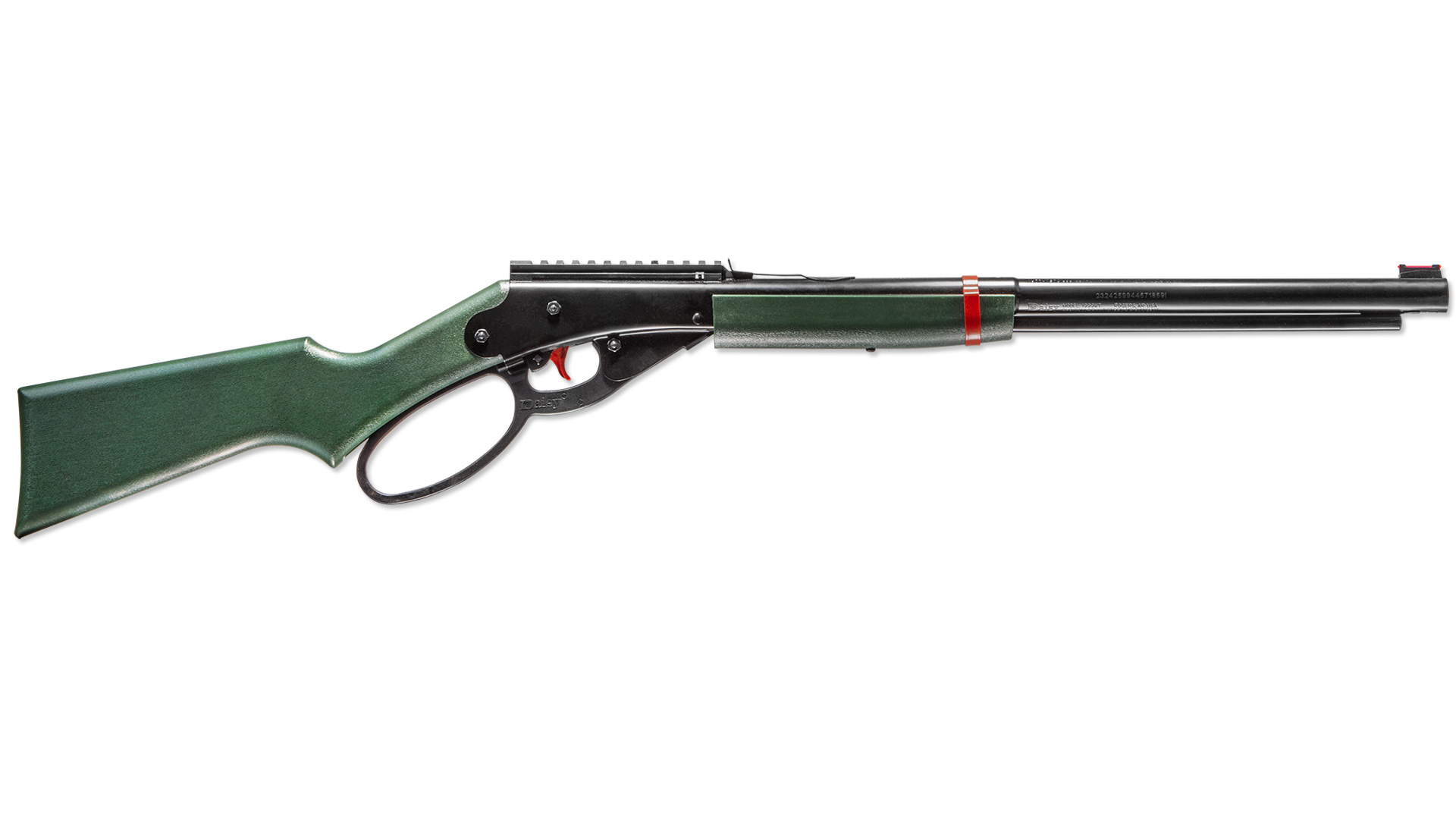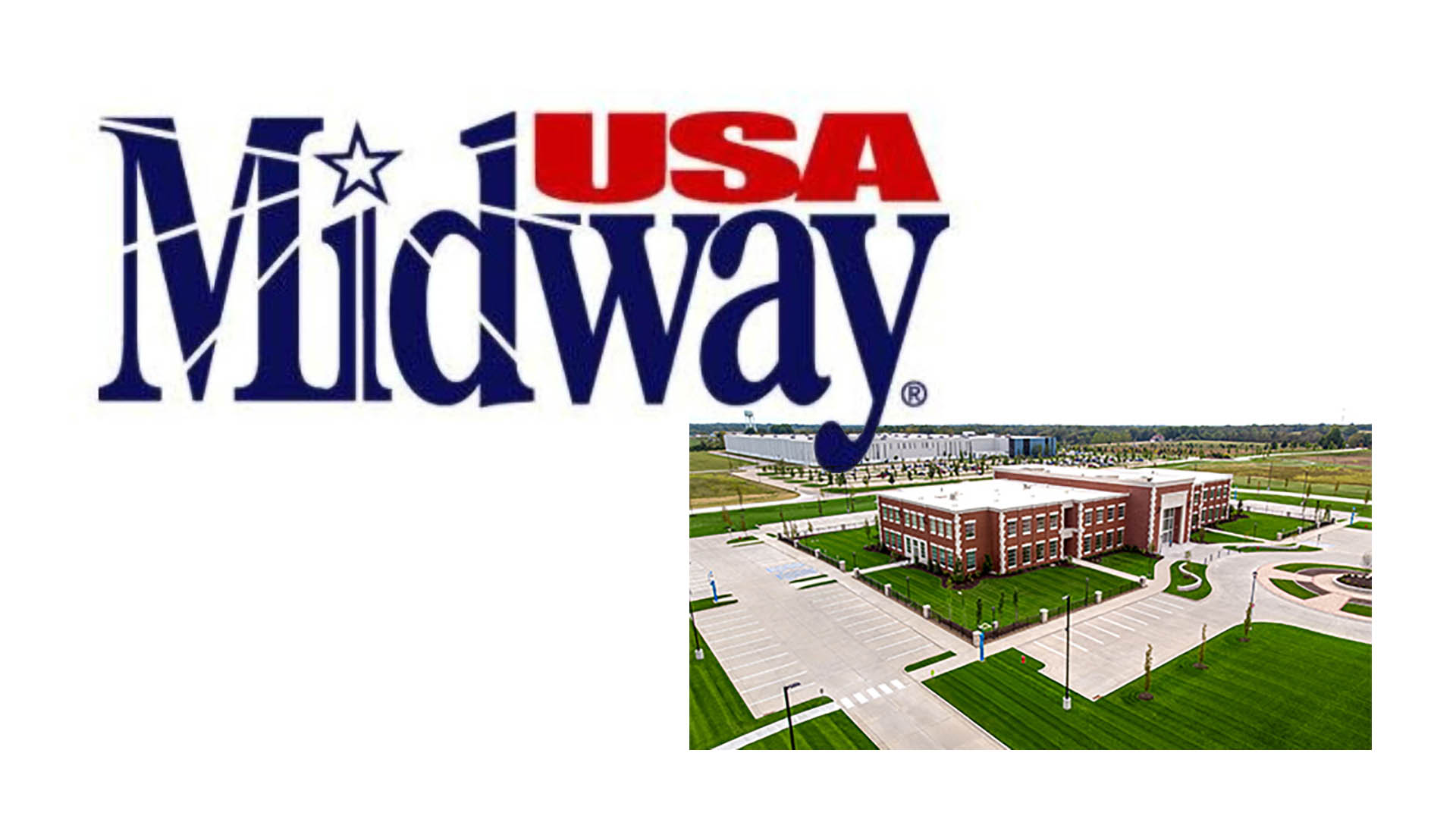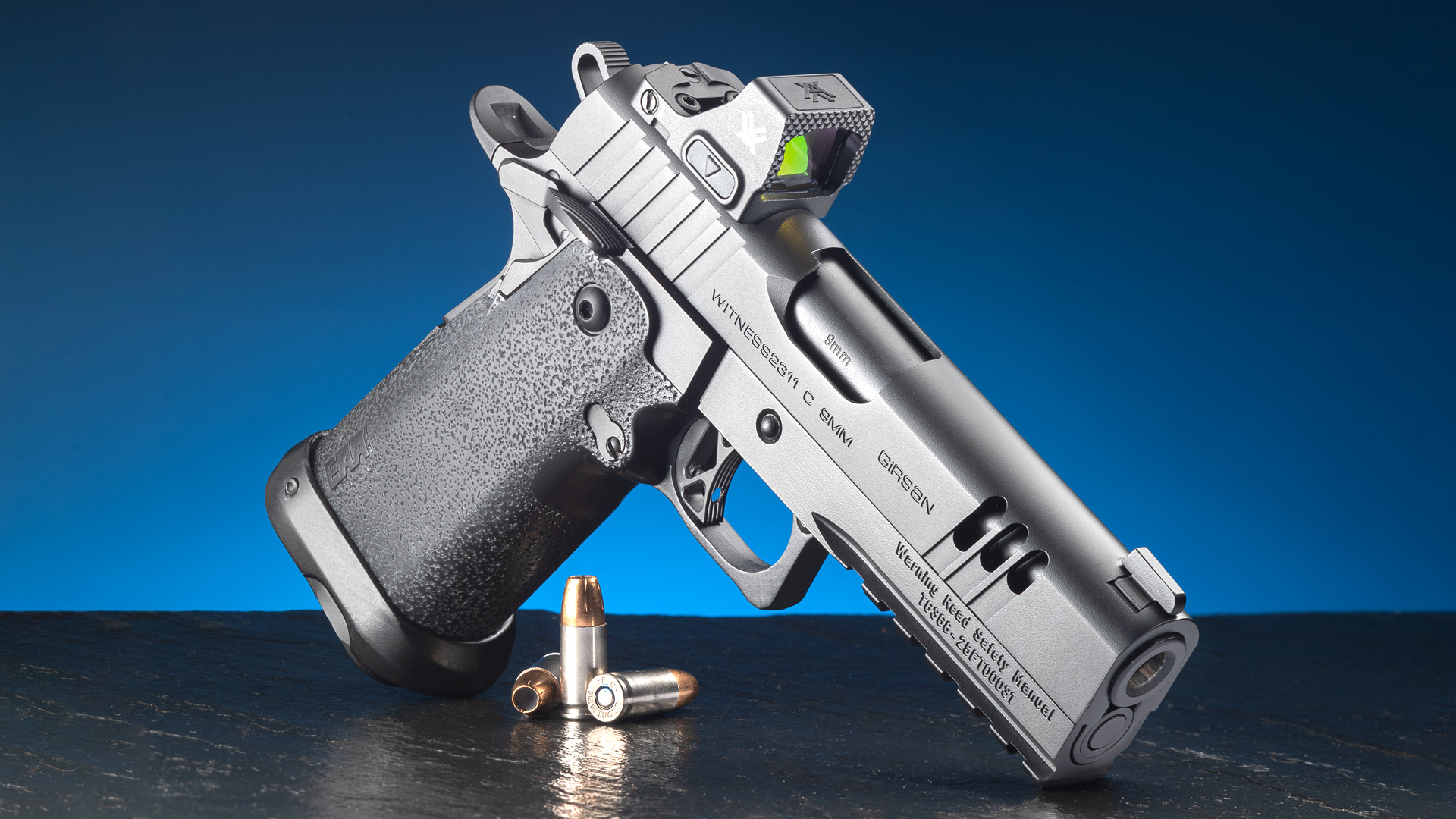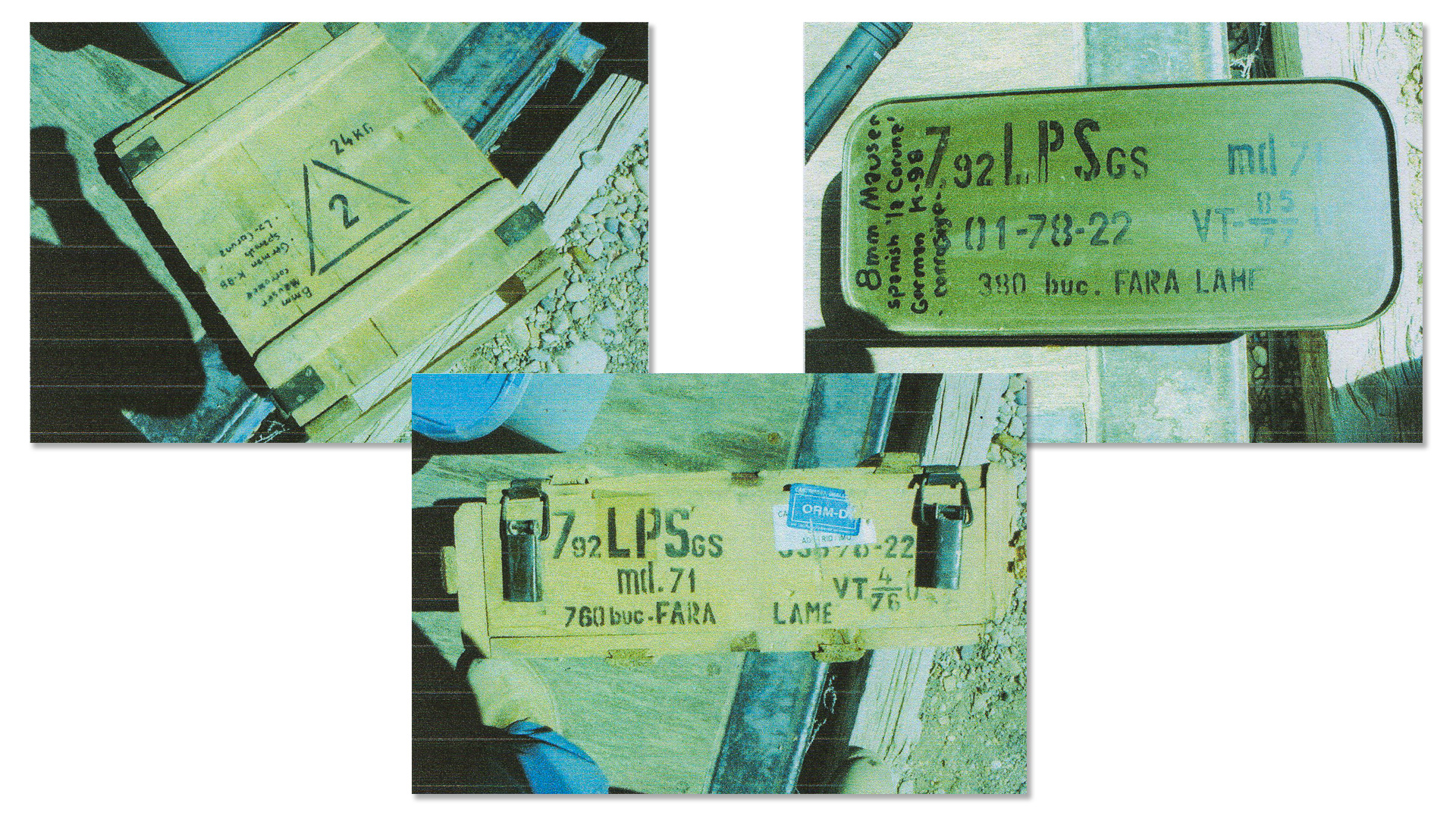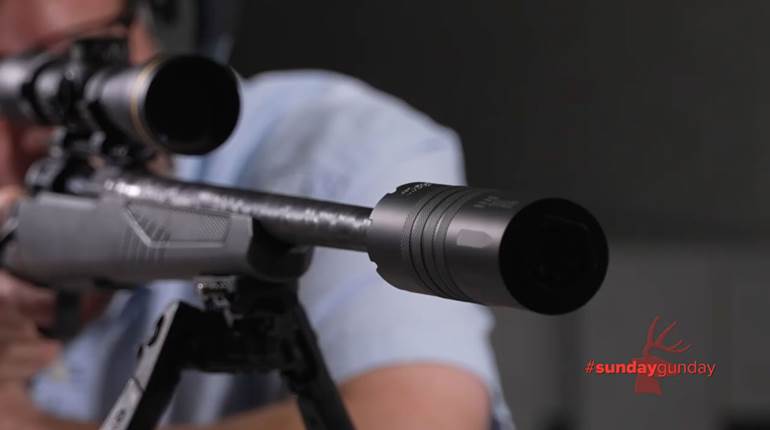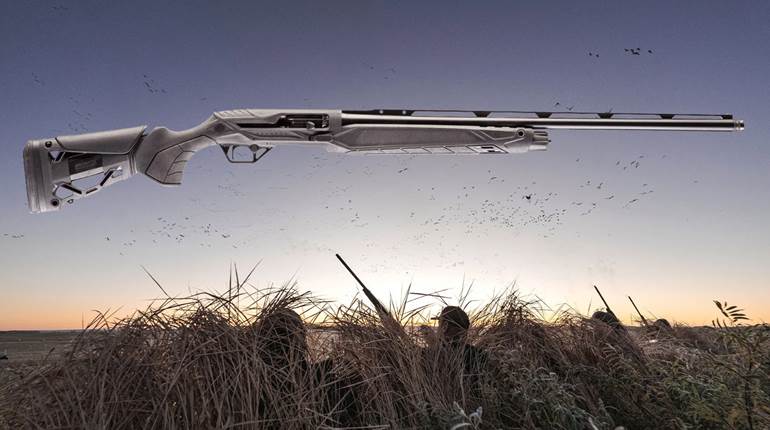
Guiette Mfg., Inc., built this operational Stinger recreation for the upcoming movie “Flags Of Our Fathers.” Sadly, the filmmakers chose not to include the Tony Stein segment in the film’s theatrical release.
This article was first published in American Rifleman, April 2006
On Aug. 7, 1942, Petty Officer 1st Class Saburo Sakai was piloting his A6M2 Zero fighter in the skies over Sealark Channel in the Solomon Islands. He had flown down with another Zero from the Japanese airfield at Kahili, Bougainville, that morning for the express purpose of attacking ships supporting one of the first American amphibious invasions of the World War II: the Operation Watchtower landings at Gavutu, Tanambogo, Tulagi and Guadalcanal.
As Sakai and his wingman approached the skies above Tulagi, he spotted a group of eight American aircraft beneath him at an altitude of 7,800 ft. Assuming they were U.S. Navy F4F Wildcat fighters, Sakai nosed his Zero over to begin his attack, and his wingman obediently followed. Closing in on the American aircraft from behind at full throttle, he assumed that the element of surprise was his. But at a range of just 100 yds., Sakai gazed at his targets through his gunsight and came to a sober realization: These were not fighters. Too late to break off the attack, Sakai realized that he was attempting to pounce on a group of SBD Dauntless dive-bombers. These SBDs of Bombing Squadron 6 from the U.S.S. Enterprise and Scouting Squadron 5 of the U.S.S. Yorktown were circling above Tulagi awaiting orders to drop their bombs on Japanese targets on the island below.

Unlike the Wildcat, the SBD Dauntless dive-bomber was protected from rear attacks by a tail gunner. In the back seat of the SBD piloted by Ensign E.E. Rodenburg, Aviation Radioman 3rd Class James W. Patterson, Jr., opened fire. “He came in fast! I fired at him, but I just don’t know if I hit him or not,” Patterson said. Sakai attempted to bank to the right, pull up and use the Zero’s horsepower to climb away from the SBDs, but he was too close. In the rear seat of one of the other Dauntlesses, Aviation Ordnanceman 2nd Class Harold L. Jones opened fire with Sakai only 100 ft. directly astern. What Jones saw next was a testament to the firepower available to the tail gunners: “His cockpit exploded, the canopy tore and something flew out. I could see his face clearly, his body and head forced back against the headrest of the cockpit. The plane went almost vertically upwards and then fell smoking. That was the last I saw of him.”
As the eight tail gunners followed the Zero with their machine guns, bullets shattered the canopy glass and hit Sakai, with fragments striking him in the chest, left leg, elbow and face. One tracer round missed his right eye by less than an inch and melted the rim of his goggles. In the brief encounter, the eight tail gunners had expended more than 1,000 rounds of ammunition and seriously injured one of the best Japanese fighter pilots of the war. Although Sakai would ultimately recover from his wounds and live to fight another day, he had been stung by one of the most lethal firearms in the U.S. military’s arsenal: the ANM2 .30-cal. machine gun—also known as the “Stinger.”
The origin of the .30-’06 Stinger dates back to a military requirement issued for an aircraft machine gun shortly after World War I. The first version was produced at the Springfield Armory as the Model 1922. After a series of interwar budget cuts ended government production of the ANM2 .30-cal., Colt Patent Firearms Co. began producing it in 1931 as the M2. For the most part, the ANM2 .30-cal. has the physical appearance of a downsized M1919-series, .30-cal. machine gun because its receiver, barrel and barrel shroud are slightly smaller than the M1919’s. This brings the ANM2’s weight down to a mere 23 lbs. (as opposed to the 31 lbs. of the M1919A4), but the similarities end there.

In addition to having a different receiver and barrel than the M1919s, the ANM2 has a backplate equipped with spade grips, a different feed cover, extractor, barrel extension and bolt. These parts were specially engineered to allow it to be fed from either the left or right side of the receiver—a versatile feature for aircraft use. In addition, the ANM2’s receiver was produced with mounting holes for cocking mechanisms and/or solenoids for electric firing, features used when the gun was mounted in the cowling or wing of an aircraft. A 100-round, fixed ammunition box can be attached to either the left or right side.
Although the ANM2 .30-cal. machine gun was gradually being eclipsed by the ANM2 in .50 BMG prior to Pearl Harbor, 193,556 were built during World War II. Of that number, 70,000 ANM2s in .303 British were provided to England either through direct sale or the Lend-Lease program for use in the wings of the legendary Spitfire.
All 193,000 ANM2 .30-cal. machine guns made during the war were produced in the state of New York by three companies: Savage Arms in Utica, Buffalo Arms and the Brown Lipe Chapman Division of General Motors in Syracuse. In the service of the U.S. military during World War II, ANM2 .30-cal. machine guns were used by the Navy, the Army Air Forces and the various Air Groups of the Marine Corps. Marine use of the ANM2 included fixed, cowling-mounted armament on aircraft like the SB2U Vindicator, and the flexible single and twin mounts on Dauntless dive-bombers. But the Marine Corps’ use of the ANM2 .30-cal. was not limited to aerial gunnery alone.
The jungle environment often experienced by Marines fighting in the Pacific Theater of Operations in World War II presented a need for a machine gun that was lighter than the standard M1919A4. Between August 1942 and March 1943, the 1st Marine Division had been engaged in heavy combat on Guadalcanal. During that time, machine gunners had found the M1919A4 .30-cal. machine gun to be cumbersome and awkward when patrolling or in meeting engagements in the jungle.
While the M1919A4 was perfectly adequate in a fixed defensive position, it demonstrated itself to be somewhat less than ideal on the assault. The Marines wanted a lightweight machine gun capable of a higher cyclic rate of fire and able to be operated by an individual. Unfortunately, no gun meeting those needs was available at the time. However, the ANM2 offered the higher cyclic rate that the Marines so desperately needed. Several were thereafter salvaged from crashed SBDs (which were abundant on Guadalcanal), and Marines began to experiment with using the Stinger on the ground.
On Nov. 1, 1943, the 3rd Marine Division conducted an amphibious landing at Empress Augusta Bay on the west coast of Bougainville—the beginning of a long and brutal battle for the island. Some of the division’s various assault units carried ANM2s ashore that day and set them up in fixed defensive positions on the beach and inland. Although those Stingers offered high cyclic rate, they were not portable because they were equipped with spade grips, and they were mounted on their buffered aircraft cradles.
The patrol activity and close-quarters jungle fighting that followed the initial invasion of Bougainville underscored the need for a lightweight machine gun capable of greater firepower than both the M1918A2 BAR and the M1919A4. It was at that point that Marines began to modify their Stingers into portable squad automatic weapons. Pvt. William H. Colby of Gloversville, N.Y., a machine gunner in the 9th Marine Regiment, modified his ANM2 by simply adding a bipod to the muzzle. Although it was still equipped with spade grips, it could at least be brought into action without the use of a mount.
On Nov. 25, Colby’s platoon was ambushed by Japanese soldiers while on patrol. As soon as the first shots were fired, Colby dropped to the ground and returned fire with his modified Stinger. With a swarm of .30-cal. bullets, Colby and his assistant gunner, Pvt. Edward F. Crumlish of Wilmington, Del., broke the back of the Japanese attack. Even with only a crude field modification, the Stinger had proven that its high rate of fire could turn the tide of a jungle skirmish.

Later in the battle for Bougainville, two Marine paratroopers from the 3rd Parachute Battalion assembled a more extensively field-modified ANM2 .30-cal. machine gun. Sergeant Mel J. Grevich of Mountain Iron, Minn., and his platoon leader, Lt. Phillip Gray of Jewell, Ore., began their project with one of the ANM2s brought ashore at Empress Augusta Bay on Nov. 1. Their modification consisted of the addition of an M1 Garand buttstock, a BAR bipod, a BAR rear sight and a fabricated trigger. Although the Stinger that Grevich and Gray assembled was not used in combat on Bougainville; it would ultimately see combat more than a year later.
At the end of the Bougainville campaign, the 3rd Parachute Battalion returned to the United States and was disbanded. The Marines who had been in the unit were then reassigned to regiments in the Fleet Marine Force. At that point, Sgt. Grevich was in the machine gun section of G Company, 28th Marine Regiment, 5th Marine Division. When he joined the 28th Marines in November 1944, the regiment was preparing for the invasion of Iwo Jima, less than three months away. As G Company trained for the operation, Sgt. Grevich grew more and more dissatisfied with the performance of its light machine gun sections, especially when they needed to cooperate closely with the rifle platoons during an assault. He recalled the ANM2 .30-cal. that he had modified on Bougainville back in 1943. With the approval of his company commander and his battalion commander, Grevich began converting Stingers.
Although he worked night and day, he was only able to produce six before the 5th Marine Division sailed for Iwo. Six reliable machine gunners would carry the modified weapons ashore during the assault: One Stinger was assigned to each of G Company’s three rifle platoons, one was assigned to the company’s demolitions section, and the fifth would be carried by Grevich himself. A sixth man was chosen from A Company, 28th Marines to carry the remaining gun. His name was Tony Stein.
Tony Stein was born in September 1921 in Dayton, Ohio, to Austrian and Hungarian immigrant parents. After dropping out of high school during his freshman year, he did what so many young men did in the height of the Great Depression—he went to work. Stein joined the Marine Corps in 1942, shortly before his 21st birthday. After completing recruit training in San Diego, he went on to Marine parachute training at Camp Gillespie. When he completed his training, he shipped out to the Pacific where he experienced combat for the first time in the Solomon Islands of Bougainville and Vella Lavella. He returned to the United States during the summer of 1944, married Joan Stominger and took leave to return home to Dayton. Upon returning to San Diego, Stein was assigned to the 28th Marines and soon thereafter departed again for the Pacific Theater of Operations.

When he landed as a part of the first wave on Green Beach 1 at the base of Mount Suribachi on Feb. 19, 1945, Tony Stein provided covering fire with his Stinger, as the rest of the Marines of his platoon moved into position on the beachhead. He then repeatedly exposed himself to a blanket of Japanese machine gun fire, forcing the enemy to reveal their positions. After doing so, Stein personally eliminated several pillboxes, killing at least 20 enemy defenders.
When machine gun fire alone could not neutralize one particularly well-defended position, Cpl. Stein directed the fire of a half-track with a 75 mm gun to get the job done. During this time, his Stinger was twice shot out of his hands. The Stinger’s voracious appetite for ammunition forced Stein to return to the beach eight times to retrieve additional linked .30-cal. During each trip to the rear, Stein was seen carrying wounded Marines to safety. On a day that was characterized by countless amazing acts of bravery, Cpl. Tony Stein’s actions stood out as particularly remarkable.
Grevich, Stein and the other four Marines continued fighting with their Stingers throughout the battle for Iwo Jima. On March 1, Stein volunteered to lead a group of Marines in locating and destroying a complex of Japanese pillboxes. While firing his Stinger at one pillbox, the fire from another pillbox cut him down. At the age of 24, Tony Stein died in the black, sulphurous sand of Iwo Jima. He never knew that he would be posthumously decorated for the unhesitating bravery he had shown on Feb. 19, 1945. One year to the day later, Tony Stein’s widow and his family gathered in the office of Ohio Gov. Frank Lausche to accept the award that he had earned on Iwo Jima: the Medal of Honor.
Tony Stein is one of 464 Americans who earned the nation’s highest award for valor during World War II. Despite the significance of what he did on Iwo Jima, the gun that helped him do it remains relatively obscure. In fact, his Medal of Honor Citation refers to the Stinger he used simply as “a personally improvised aircraft-type weapon.”
Though the Stinger was not standard-issue, it is nevertheless one of the great combat arms that equipped the American military during World War II. The Stinger also stands as evidence of a virtue that U.S. Marines have exhibited since November 1775: the ability to improvise.












